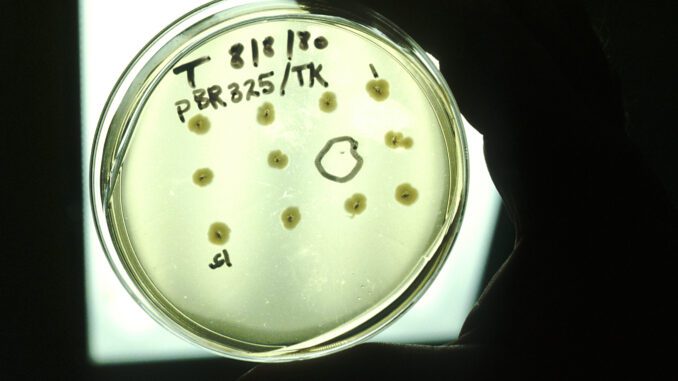
What is Recombinant DNA Technology?
The recombinant DNA technology is a technology in which the DNA molecules are produced by joining together two or more DNA segments that are originally from two different organisms.
Recombinant DNA molecule
In recombinant DNA technology, a vector is a recombinant DNA molecule that is a plasmid, phage, or virus into which the desired DNA fragments have been inserted to enable its cloning in an appropriate host.
Why do we need recombinant DNA molecules in recombinant DNA technology?
There are broadly three main objectives for producing recombinant DNA molecules
- To obtain a large number of copies of the specific DNA
- To obtain a specific protein to recover a protein produced by the concerned gene.
- To integrate the specific gene in a chromosome of a target organism.
Terminology for Recombinant DNA Technology
Vector
DNA segments are intergraded into an autonomously replicating DAN molecule called a vector. The most commonly used vectors are either bacterial plasmids or DNA viruses.
DNA inserts
The vector which contains the DNA segments to be cloned is called DNA insert.
Host
The DNA inserts which are introduced into a suitable organism are known as the host. A host is generally a bacterium.
Transformation
The process by which the DNA insert is introduced into the host is known as transformation.
DNA cloning or gene cloning
The steps that are included in the transformation of the suitable host into recombinant DNA and the cloning of transformed cells are known as gene cloning or DNA cloning.
Clone
A clone is an asexual progeny of a single individual or cell. As a result, a clone has the same genotype and is also identical to the individual from where it is produced.
Chimera
Organisms formed from genetically different cells are called chimera.
What are the steps of recombinant DNA technology or gene cloning?
There are Six steps that describe the activity of gene cloning or recombinant DNA technology
- Isolation or production of the desired DNA fragment to be cloned.
- Insertion of the isolated gene into a suitable vector in order to produce a recombinant DNA.
- Introduction of the recombinant DNA into a suitable organism specifically a bacterium that is E. coli for transformation.
- Identification of the gene containing desired gene fragments.
- Multiplication or expression of the desired gene fragment.
- Transfer and expression of the gene into another organism.
What are the tools used for gene cloning?
Gene cloning tools are basically biological products or biological agents for doing the gene cloning process. Another term for gene cloning tools is gene engineering tools. For this process, different types of enzymes are used to cut, add, multiply, or modify the specific gene.
These four enzymes which are used in recombinant DNA technology
- Nuclease
- Ligase
- Polymerase
- DNA modifying enzymes
Nuclease in recombinant DNA Technology
Nuclease is a type of enzyme that helps in breaking the DNA into a specific site. These enzymes cleave the phosphodiester bond between nucleotides and nucleic acids.
Nuclease is further divided into
- Exonuclease: These enzyme acts upon the genome and digests the base pairs on 5’ or 3’ ends of a single-stranded DNA or a single-strand gap in a double-stranded DNA.
- Endonuclease: These enzymes cleave the double-stranded DNA at any point except the ends but they act upon one strand of the double-strand DNA.
- Restriction endonuclease: these enzymes occur naturally in bacteria and have a specific target site.
Examples of nuclease enzymes are
- SI nuclease: these enzymes are used for the removal of single-stranded protrusions of both ends.
- Lambda exonuclease: It is used for the removal of nucleotides from the 5’ end.
- E. coli exonuclease III: This enzyme helps in the removal of nucleotides from the 3’ end.
- Exonuclease Bal31: Helps in making DNA fragments with blunt ends shorter from both ends.
Ligase in recombinant DNA Technology
DNA ligase enzymes help in sealing the nicks that are there in the recombinant molecules. Another term for the ligase enzyme is molecular glue. These enzymes are produced in all the organisms that help in joining together neighboring nucleotides. They are prepared from E. coli cells infected by phage T4.
Polymerase in recombinant DNA Technology
This enzyme helps in the synthesis of long chains of polymers or nucleic acids. The polymerase is of two types DNA polymerase and RNA polymerase. Some examples are
Reverse transcriptase recombinant DNA Technology
It is used to produce cDNA copies.
The Klenow fragment of E. coli DNA polymerase I: It extends the shorter strands to make the protruding end double-stranded.
DNA modifying enzymes
These enzymes help in the modification of DNA strands by adding or removing the phosphate groups. Examples of DNA-modifying enzymes are
Alkaline phosphatase: It helps in removing the 5’-phosphate from the DNA end.
T4 polynucleotide kinase: It helps to add the phosphate group to an end having a free 5’-OH.
